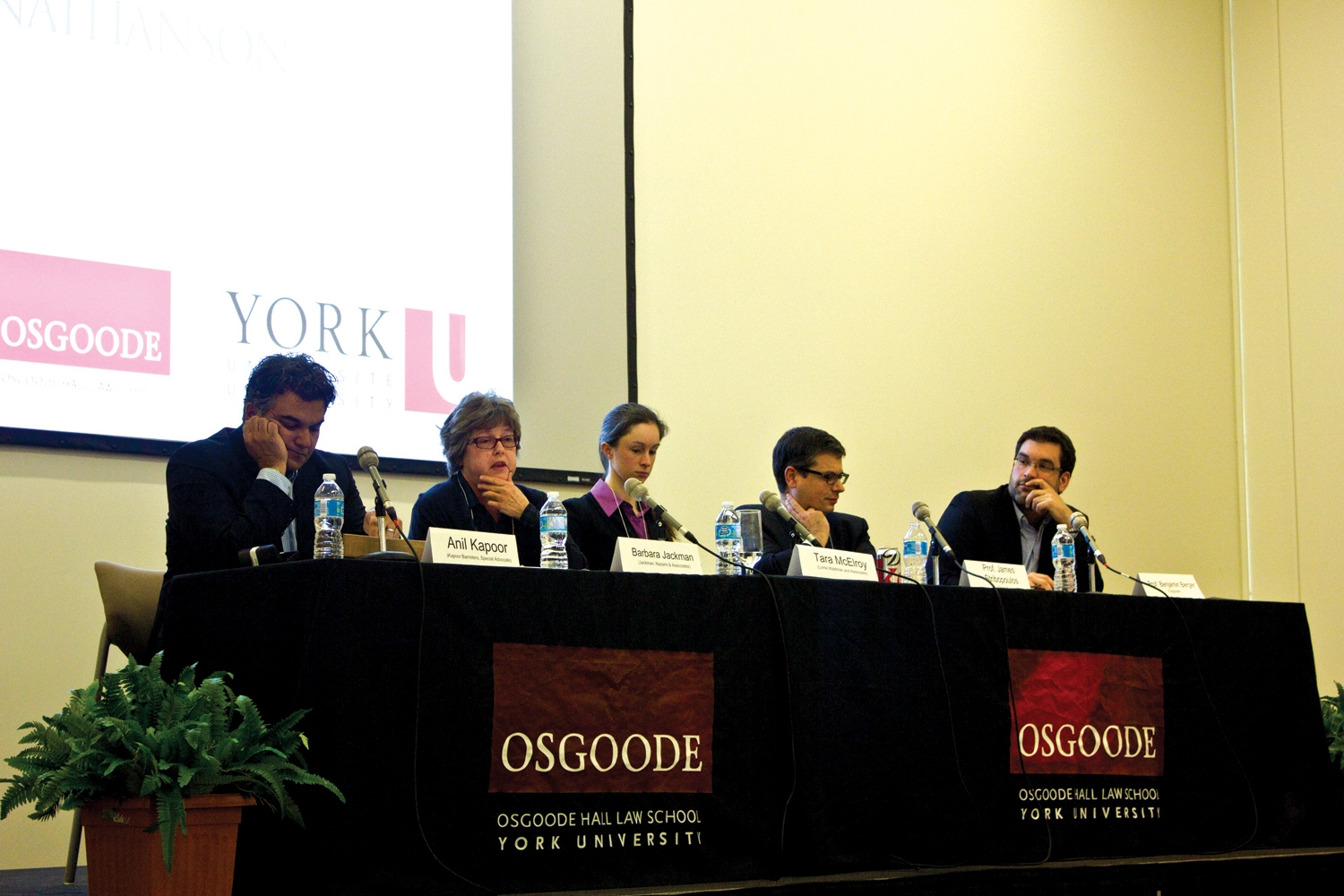Torture happens in Canada, says Osgoode professor

Responding to the UN’s criticism of Canada’s “complicity” in torture both at home and abroad, a forum discussing the issues of torture was held at York.
Several experts discussed evidence of Canada’s involvement in torture at a forum hosted by the Jack and Mae Nathanson Centre on Transnational Human Rights, Crime and Security at Osgoode Hall Law School on January 9 from 12:40 p.m. to 6 p.m.
The forum entitled, “Evidence of Torture in Canada: The New Normal of Official Complicity,” was divided into three separate hour-and-a-half long panels discussing topics such as how Canada interacts with foreign governments engaged in torture, Canadian border service agencies, and the transfer of detainees in Afghanistan.
“Despite popular belief, the issue of complicity in torture is a very real and pressing one for Canadian officials to address,” says Francois Tanguay-Renaud, director of the Nathanson Centre.
Tanguay-Renaud says the goal of the forum was to get various field experts into one room and scrutinize the issue of torture.
“We had a lot of news items on torture being linked to Canada,” says Tanguay-Renaud, adding that over the past few years, new laws along with the official attitudes towards torture becoming casual are a cause for concern.
The forum comes in light of the United Nations Committee Against Torture’s June report, condemning Canadian “complicity” in torture.
Canadian complicity is more than a blind eye, says associate dean of Osgoode James Stribopoulos, adding that torture occurs domestically.
“If you pay close attention to what happens in our domestic criminal courts, you will see, from time to time evidence emerge that the practice of torture is something that occasionally, and sadly, is also a domestic reality,” says Stribopoulos.
Unlike the US, Stribopoulos says, Canada has a clear domestic definition of torture in section 269.1 of the Canadian Criminal Code.
Torture in Canada is defined as “any act or omission by which severe pain or suffering, whether physical or mental, is intentionally inflicted on a person” by peace officers, public officers, and Canadian armed forces, among others.
If police use gratuitous violence in an arrest, punitive violence in the aftermath of a high-speed chase or violence to coerce a confession, then “that qualifies as torture,” Stribopoulos says.
“These incidences are never charged with torture,” says Stribopoulos. Prosecutors lay assault or assault causing bodily harm charges instead.
We should be wary of forgiving officers of assaulting “guilty” suspects, argues the professor.
Torture, he says, is worse than planting evidence at crime scenes; it is manufacturing evidence through violence.
The event also discussed issues such as the “extraordinary rendition” of Maher Arar, and the Omar Khadr case.
This is the third public forum on torture and Canada at Osgoode in five years; the first, in 2007, was a series on torture and Maher Arar; in 2010, a forum took place on Canadian troops allegedly transferring detainees to Afghan authorities knowing that detainees may be tortured.
By Ernest Reid, Executive Editor (Online)


